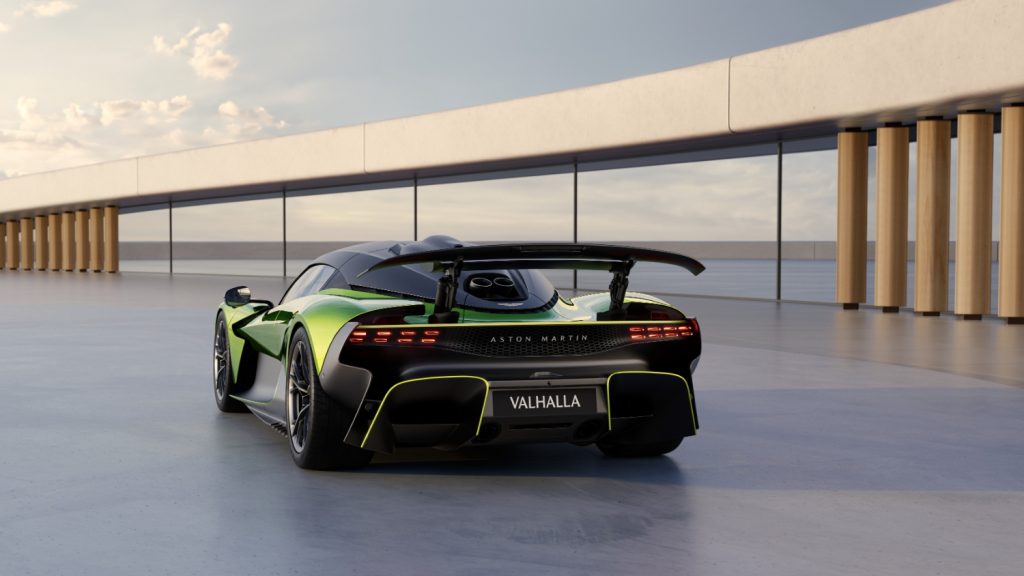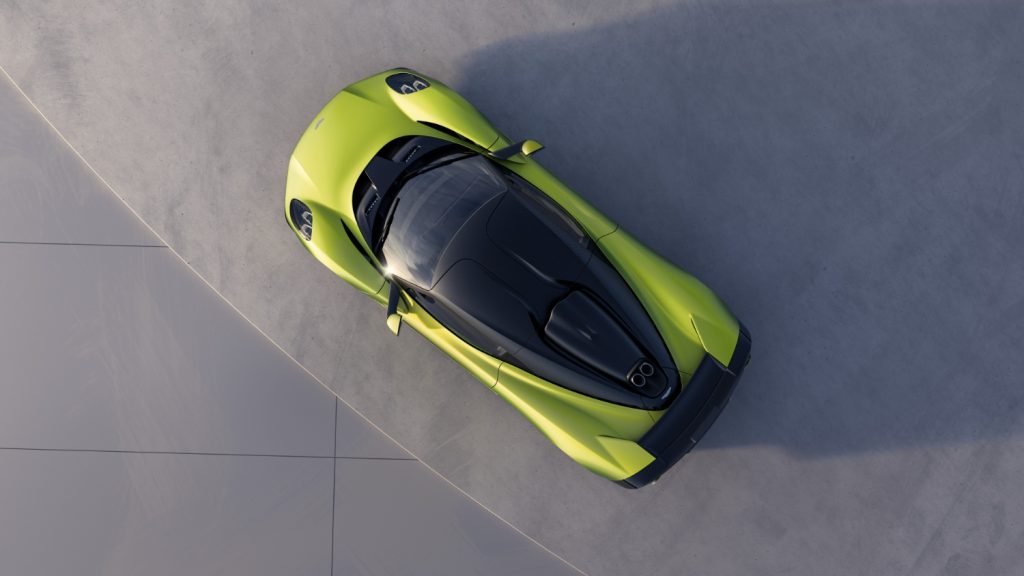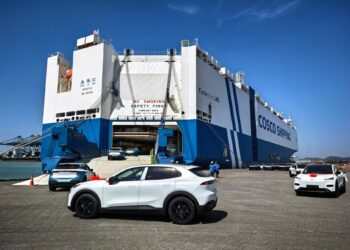After five years of development, Aston Martin has finally unveiled the Valhalla, the mid-engine supercar, ahead of its production start scheduled for 2025.

The Aston Martin Valhalla is equipped with a 4.0-liter twin-turbo V8 engine that produces 828 hp, which is combined with three electric motors, two on the front axle and the third integrated into the transmission, allowing for a combined output of 1079 hp and a maximum torque of 1,100 Nm.
The incorporation of two electric motors on the front axle enables precise torque vectoring, while the rear axle is equipped with a limited-slip electronic differential. The electric assistance also mitigates any noticeable turbo lag, and lost energy can be recovered during braking.

The new supercar from Aston Martin, which leads the British brand’s transition from combustion engines to hybrid and fully electric power, features all-wheel drive and benefits from the knowledge and experience of Aston Martin Performance Technologies in Formula 1, incorporating several elements of active aerodynamics, most notably a generous rear wing.
Like the Valkyrie, the Valhalla also prioritizes aerodynamics, and thus at 240 km/h, Aston Martin’s new supercar produces over 600 kg of downforce.

For managing the entire active aerodynamic system, the Valhalla utilizes the Integrated Vehicle Dynamics Control (IVC) system, which performs all calculations and adjustments depending on the type of driving, managing suspension, steering, braking system, and torque vectoring, which vary according to the use of the four available driving modes. The Race mode disables assistance systems for a more purist experience, while the electric mode allows for 100% electric use. The other two options aimed at more sporty performance are Sport+ and Sport.
Aston Martin also revealed that the Valhalla has an all-electric range of 14 km, although the maximum speed is limited to 140 km/h in fully electric mode. However, it is worth noting that the Valhalla boasts an acceleration from 0 to 100 km/h in about 2.5 seconds, and a top speed of 349 km/h.

To tame this asphalt monster, Aston Martin equipped the Valhalla with 409 mm carbon-ceramic discs at the front, the largest ever used by the British brand in a production model, featuring six-piston Brembo calipers. The rear utilizes 389 mm discs with four-piston calipers. Additionally, the 20’’ front and 21’’ rear wheels are fitted with Michelin Pilot Sport Cup 2 tires specifically designed for the Valhalla.

Access to the cabin is through butterfly-shaped doors, and the interior is characterized by a sporty look and the use of exposed carbon, complemented by a steering wheel inspired by F1.

Additionally, the seats feature a carbon structure, similar to competition models, as well as two screens, one for the instrument panel and another for the infotainment system.

Note also the Bowers & Wilkins sound system, Alcantara upholstery, satellite navigation, and compatibility with Apple CarPlay.
Aston Martin has already announced that production of the Valhalla will begin in the second quarter of 2025, but has not revealed the price of this hybrid supercar.










